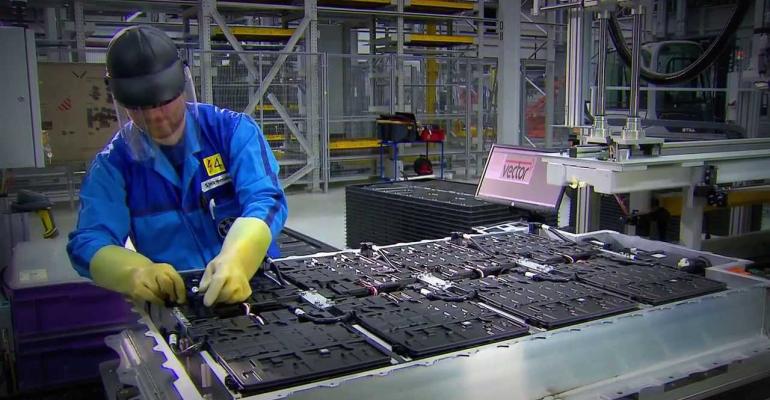TRAVERSE CITY, MI – A respected industry consultant predicts battery prices will come down sufficiently in the next five to seven years to make electric vehicles viable from a cost, driving range and supporting infrastructure standpoint.
Speaking at the recent Center for Automotive Research Management Briefing Seminars here, Subhash Dhar, founding president of Ovonic Battery and most recently CEO of XALT Energy, expects lithium battery costs at the module level to reach $125/kWh by 2022 due to improvements in materials, processes and automation, coupled with new cell designs and higher volumes.
He further predicts the next-generation battery will use solid-state technology and will find its way into consumer electronics by 2025, then into EVs by 2028.
Looking five years out to 2022, Dhar expects energy density of lithium batteries to reach 400 Wh/kg, which means a driving range of 400 miles (640 km) employing a 50-kWh battery pack.
“In practical terms,” he explains in an interview following his Traverse City presentation, “a typical electric car would consume about 125 Wh/mile (78 Wh/km) at a constant speed of 55 mph (88 km/h). A 50-kWh battery with 400 Wh/kg of specific energy can easily take the car 400 miles (640 km) within the allocated weight limits for the battery.
“With all other cabin comfort load (including air conditioning and heating), the range will drop by 15%. This can be compensated for without sacrificing the 400-mile (640 km) range by increasing battery capacity to 57 kWh.”
Dhar insists all-electric and plug-in hybrid cars “will not be restrained by a lack of battery. They will be restrained by a lack of recharging stations. The consumer’s range anxiety will shift to recharging-station anxiety.
“We aren't going to have 170,000 charging stations in 2025 as we have 170,000 gas stations today.”
What number is necessary is not clear.
Concerns about charging infrastructure notwithstanding, Dhar expects EVs to achieve 35% penetration globally by 2040. “And post-2025, there won’t be a single car in the Western world plus China that won’t have electrons playing some role in the powertrain. That includes everything from 48V and micro-hybrids,” he says.
Contributing to Dhar’s bullish outlook are advances being made in battery materials, notably in nickel-rich cathodes and silicon-doped anodes that he believes will help lower costs 50%.
He predicts, for instance, that lithium-metal will replace graphite as the anode material of choice by 2022, then possibly switch again to lithium-titanate by 2030. Also by 2022, solid and liquid electrolytes will replace ethylene carbonate, diethyl carbonate or lithium hexafluorophosphate.
In the separator field, he cites Kevlar as a possible alternative to polyethylene foam.
Against this backdrop, Dhar predicts energy density and specific energy of lithium-ion batteries will increase from 650 Wh/L and 250 Wh/kg today to 900-1,000 Wh/L and 400 Wh/kg in 2022, then rise again to more than 1,000 Wh/L and 500 Wh/Kg in 2030 when lithium-air technology comes on stream.
To meet increasing demand, Dhar expects global lithium-battery production capacity to quadruple by 2025 from today’s level of 90-100 GWh. Half of that capacity, an estimated 200 GWh, will be for EVs.
“China alone has increased capacity from 20 GWh to 35 GWh in the past 18 months,” he says.
Among the forecasts made at MBS, Continental Automotive Systems predicted EVs and plug-in hybrids will account for 4% of global vehicle demand in 2020 and 10% in 2025. That is 10% out of global sales of 110 million units.





